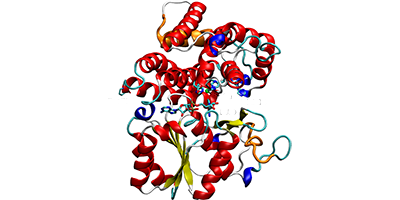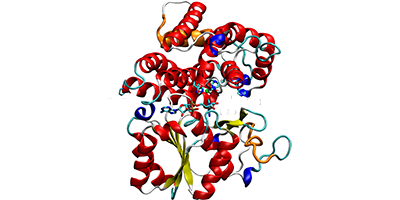Classifying Protein Wiggles
Proteins rely on changes in their shape to function properly. Scientists therefore pay close attention to small changes in protein structure, but not all “wiggles” are equal. A new study, combining neutron and light scattering experiments with molecular dynamics simulations, shows how measurements of protein flexibility can be used to distinguish elastic vibrations from true conformational alterations. The results, described in Physical Review Letters, explain certain protein behaviors, such as why protein flexibility sometimes increases dramatically with temperature.
To drive chemical processes, proteins often have to physically fit, like keys, with other molecules. Wiggling into place, the protein may make conformational changes, in which atoms in the molecule jump from one potential energy well to another. But protein flexibility also comes from atoms fluctuating elastically inside a single potential well. Elastic and conformational changes should depend differently on temperature and hydration, but previous studies of protein flexibility have typically not separated the two contributions.
Liang Hong of the Oak Ridge National Laboratory, US, and colleagues have developed an effective way to disentangle elastic and conformational movements. They first measured the flexibility—as is often done—using incoherent neutron scattering, which records the atomic displacements (mostly of hydrogen atoms) in a particular protein. Comparing these displacement data to molecular dynamics simulations, they realized that the elastic fluctuations of individual atoms could be inferred from vibrational excitations of the full molecule, which they measured by light scattering experiments. By separating out the elastic part, the researchers showed that high protein flexibility at room temperature is due primarily to a higher rate of conformational changes. – Michael Schirber





